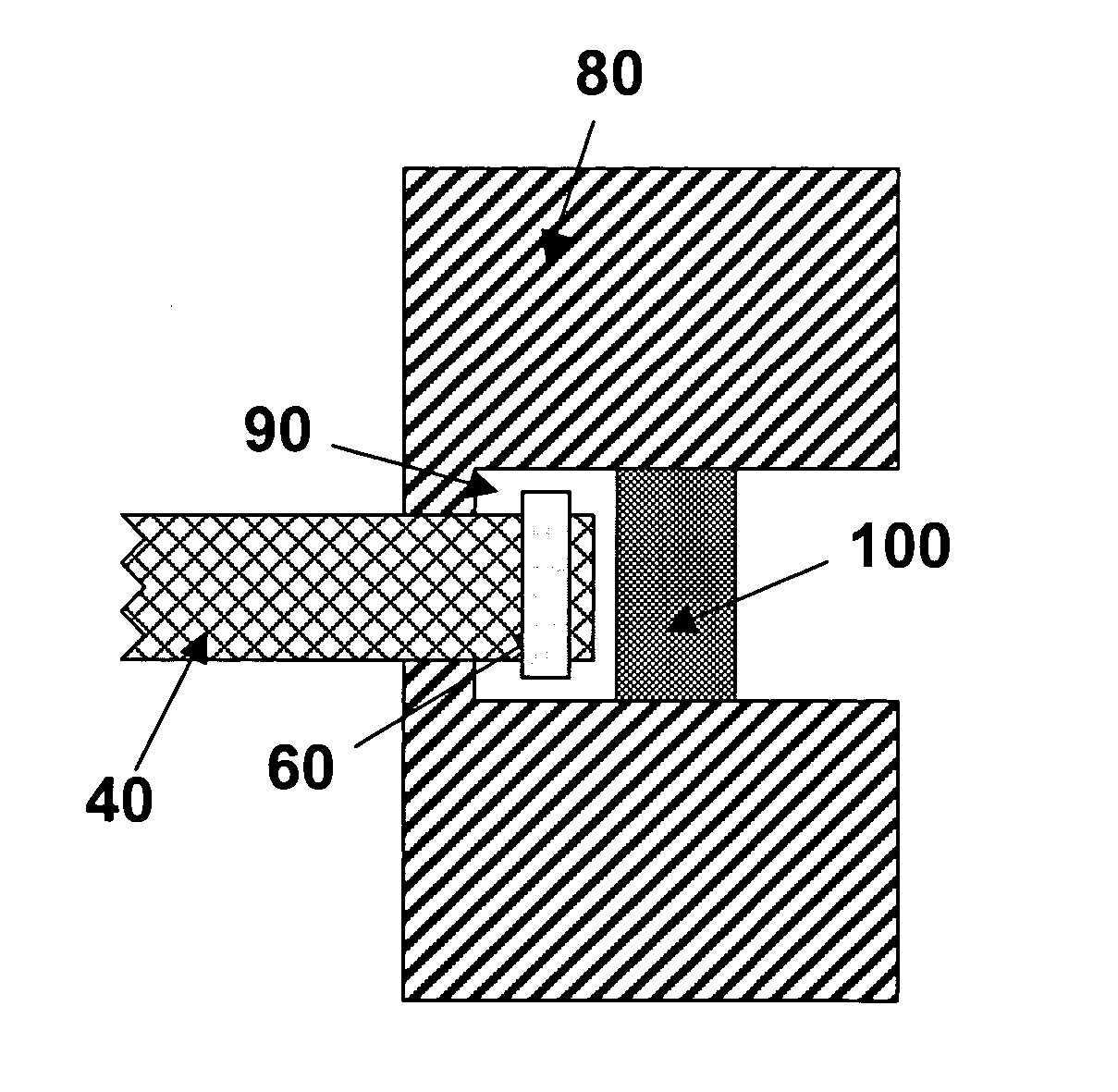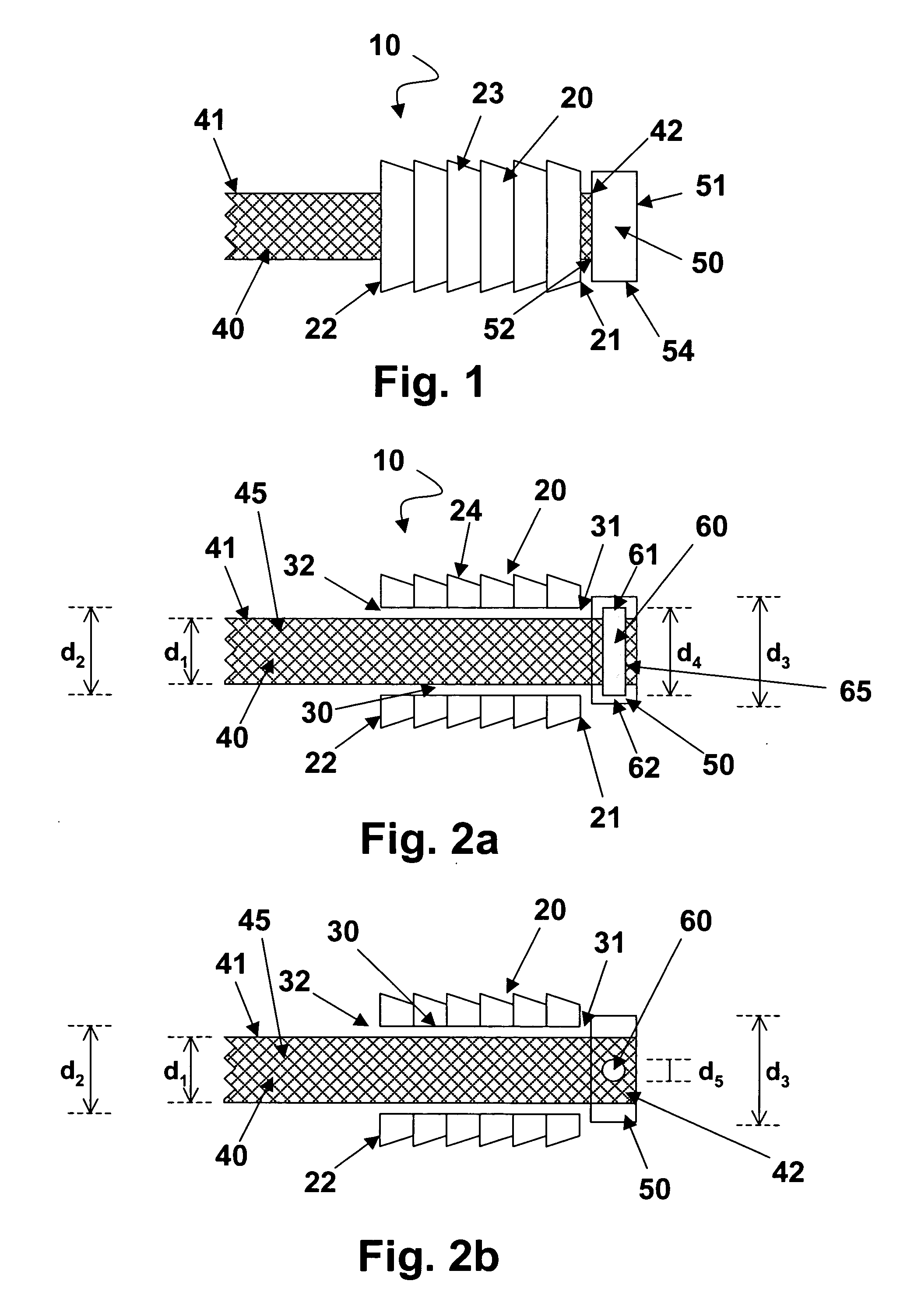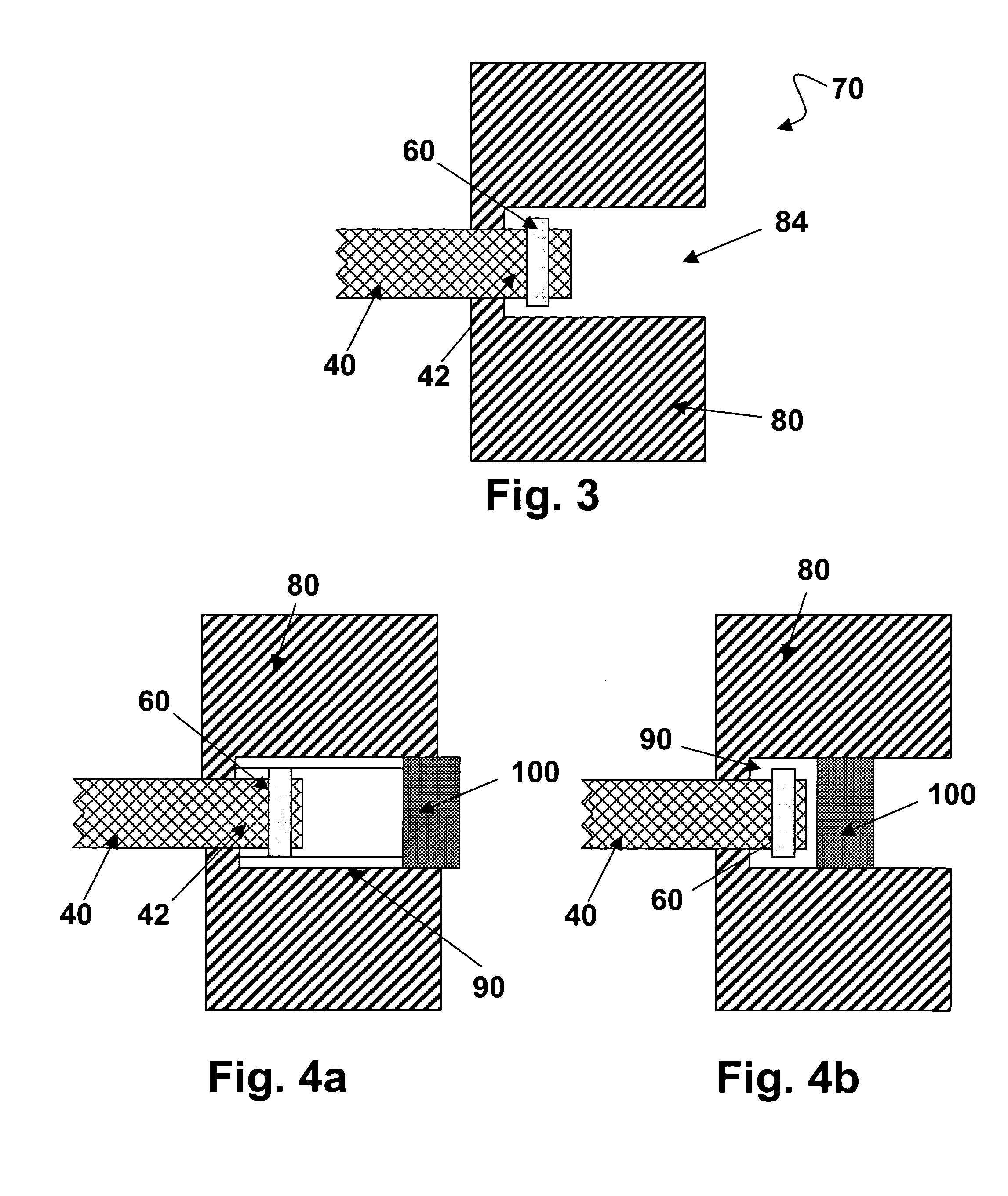Tissue repair device and fabrication thereof
- Summary
- Abstract
- Description
- Claims
- Application Information
AI Technical Summary
Benefits of technology
Problems solved by technology
Method used
Image
Examples
example 1
Forming Rod / Cord / Stopper Assemblies
[0045] In this example, a general compression molding process was used to form rod 60 / cord 40 / stopper 50 assembly.
[0046] The rod 60 was formed by extruding 95 / 5 poly(lactide-co-glycolide) (95 / 5 PLGA) from PURAC (Gorinchem, The Netherlands), with an Inherent Viscosity (I.V) of 2.33 dl / gm (measured in chloroform at 25° C. and a concentration of 0.1 gm / dl) at 200° C. in a DACA Spinline extrusion system. The diameter of rod 60 was 0.635 millimeter. Rod 60 was cut to 0.4 centimeters in length.
[0047] The material used to form stopper 50 was 95 / 5 poly(epsilon-caprolactone-co-p-dioxanone) with an Inherent Viscosity (I.V) of 1.5 dl / gm (measured in chloroform at 25° C. and a concentration of 0.1 gm / dl). The 95 / 5 poly(epsilon-caprolactone-co-p-dioxanone) was prefabricated into a short tube with dimensions of: OD 0.38 centimeters, ID 0.23 centimeters, and 0.30 centimeters long (by extrusion under an extrusion temperature of 85° C.).
[0048] The cord was a th...
example 2
Surgical Procedure
[0053] A patient is prepared for spinal fusion surgery in a conventional manner. The surgery will fuse one or more levels of the spinal column. The patient is anesthetized in a conventional manner. The tissue repair site is accessed by making an incision through the abdominal cavity and dissecting down to the spinal column. A sterile device of the present invention is prepared for implantation into the patient, the device having anchor members mounted to each end of the cord. The operative site is prepared to receive the anchor members of the repair device by dissecting through the ligamentous structure attached to the vertebral bodies of the spinal column that will be fused. A discectomy procedure is performed to remove the disc of the vertebral level to be fused and a bone graft is inserted into the discs space. A hole is drilled into the vertebral body above and below the disc space. The anchor bodies are then inserted into drilled holes in the adjoining verteb...
PUM
| Property | Measurement | Unit |
|---|---|---|
| Molar ratio | aaaaa | aaaaa |
| Biocompatibility | aaaaa | aaaaa |
Abstract
Description
Claims
Application Information
 Login to View More
Login to View More - R&D
- Intellectual Property
- Life Sciences
- Materials
- Tech Scout
- Unparalleled Data Quality
- Higher Quality Content
- 60% Fewer Hallucinations
Browse by: Latest US Patents, China's latest patents, Technical Efficacy Thesaurus, Application Domain, Technology Topic, Popular Technical Reports.
© 2025 PatSnap. All rights reserved.Legal|Privacy policy|Modern Slavery Act Transparency Statement|Sitemap|About US| Contact US: help@patsnap.com



